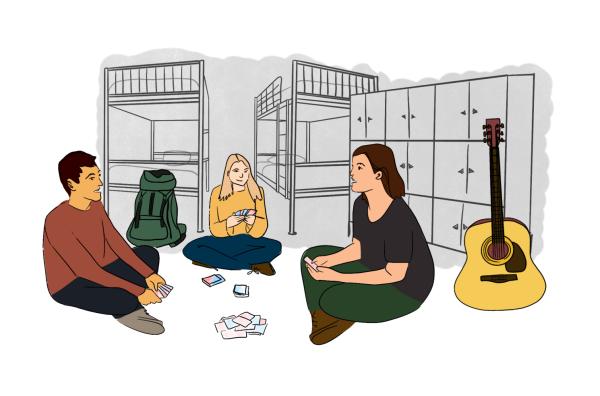Unpopular Opinion: Our Latino Families Are Pretty Racist
I am 14 years old, having tea in my Tia Olga’s house; gossip in our family is nothing short of religious, so when the conversation turns to one of my cousin’s newest girlfriends, I am acutely tuned in. One of my distant relatives launches into his first-hand account of meeting her, saying, “es morena de pelo malo” – “she’s brown-skinned with bad hair.”
I come from a white, middle-class Colombian family. Although we share equally as much of our lineage with Indigenous farmers in small pueblos as we do with the Spaniards who brutally colonized them, it should have been no surprise to me that older members of my family harbor intensely racist, particularly anti-Black views. Yet, I was still astounded.
I am by no means an authority on racism in the Latino community by first-hand experience; my White skin gives me privilege that insulates me from the prejudice Latinos with darker skin face. However, as a member of the Latino community as a whole, I can certainly attest to the blatant racism, anti-Blackness and colorism dominant within our culture.
Moreover, I can attest to how our status as a marginalized group, as a population of immigrants or first-generation Americans within the U.S., often leads us to believe we have no obligation to undertake the same anti-racist work of introspection we expect of our white, “Gringo” counterparts. I hope writing this article will help amplify and support the voices of BIPOC, who have been speaking on this issue for years to no avail.
To acknowledge the racism present in the Latino community, we have to begin by acknowledging that we are not a monolith. White America has painted us with the same broad brush, but our families comprise complex identities that they do not shed when they leave their home countries.
Not every Latino is an undocumented manual laborer. This assumption is not hurtful because we should not place any shame on these occupations; it grossly promotes the belief that minorities are there to fulfill the ideas of our existence that colonizers and now contemporary Americans place upon us. For example, while I may be “Hispanic” in the United States, a term associated with marginalization, in Colombia I am a “blanquita,” assumed to belong to the upper class. Still, only this former identity is paid any attention to by Americans.
The diversity within our community makes it resilient. But it also creates the spaces necessary for division and prejudice, which began the moment our community was created — when European colonizers like Christopher Colombus added themselves and the people they enslaved to an already diverse mix of native peoples like the Incas, Mayas and Aztecs, dividing us into Criollos, Mulattos, Indios and Mestizos among other racial categories based on the level of subjugation they believed one deserved. We continue to see this caste system alive in countries throughout Central and South America, where social mobility and opportunities are severely restricted to certain groups, much the way they are in America. We also see how this caste system is alive and well in the casual racism Latino families display long after leaving their homelands.
Among Latinas, I most often feel this racism in the ongoing conversations around appearance and beauty, and it’s the area I wish to speak on because it’s a perfect example of how Latinos are both victims and oppressors. Despite the fact that many Latinas have dark hair, eyes and skin, generations have internalized the idea colonialism instilled that to appear whiter is better.
In many ways, our Latina mothers and grandmothers who don’t appear white themselves hold on to these ideas out of fear. They hope their descendants will escape prejudice if they lean into whiteness. I remember being ten, ready to board my flight home from Colombia’s El Dorado airport when a flight attendant stopped my grandmother and two cousins and said, “how beautiful your granddaughter is; that golden hair is angelic; she is so special.” She then turned to my younger cousin, with tan skin, dark curly hair and black eyes, and said, “you are pretty too, but, you know,” and winked.
At just four years old, my cousin was expected to understand her beauty was largely dependent on her proximity to whiteness, even in the eyes of women who looked just like her. When she goes outside, she is warned by family and friends to stay in the shade so she won’t “get even Blacker.” If she goes on to marry a Latino of fair skin and light eyes, she will be told she is “mejorando la Raza” — “bettering the race.” Among my Latina friends, we all landed at the same conclusion that the most racist comments we have heard, and the toxic beauty standards we fight hard not to internalize, come from within our communities that are harmed by these ideas’ existence, rather than white Americans who are not less racist but more guarded with the prejudice they display, considering they are not consistently bailed out of accountability.
Professor at Fordham University and author of “Racial Innocence: Unmasking Latino Anti-Black Bias and the Struggle for Equality,” Tanya K. Hernandez, wrote in theGrio: “when it comes to Latino racism, the family is the scene of the crime.” This Hispanic Heritage Month, we must listen to our elders for the wisdom they provide us on their struggles. We must also hold them accountable for the hate they harbor and educate them in the battle against ignorance and misconception, especially as Critical Race Theory and other vital studies of oppression come under attack from America’s far-right. Because, yes, our Latino families are not immune; they, too, can be racist.











